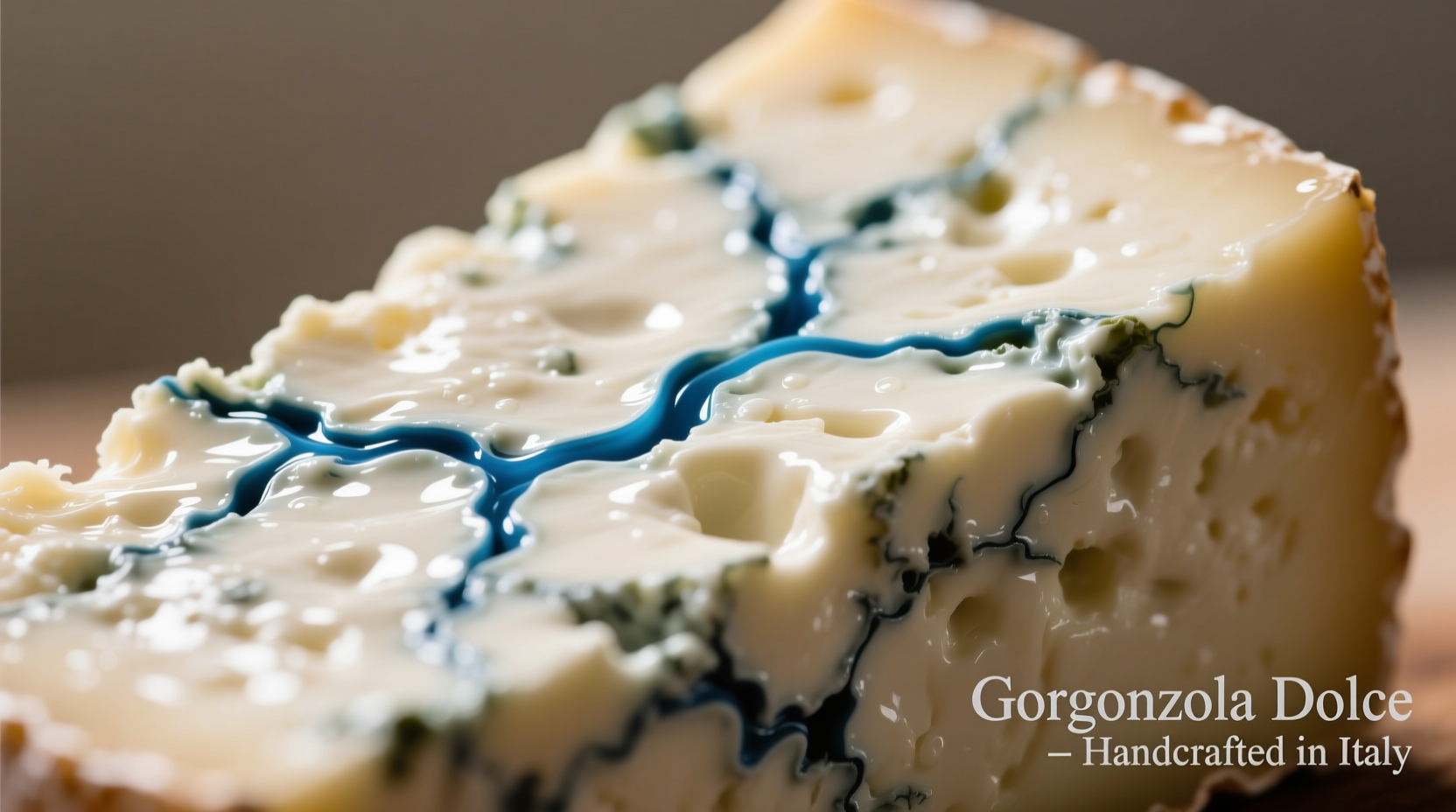When you first taste Gorgonzola, your palate encounters a remarkable duality: the initial creamy richness gives way to a pleasantly sharp, almost peppery finish that lingers without overwhelming. This Italian blue cheese offers a sophisticated flavor journey that distinguishes it from other members of the blue cheese family, making it both approachable for cheese newcomers and intriguing for connoisseurs.
The Sensory Experience of Gorgonzola
Gorgonzola's taste profile unfolds in distinct layers that engage multiple senses simultaneously. Unlike mass-produced blue cheeses that often emphasize only sharpness, authentic Gorgonzola PDO (Protected Designation of Origin) cheese presents a harmonious balance that has been perfected through centuries of traditional production in Northern Italy's Lombardy and Piedmont regions.
The moment Gorgonzola touches your tongue, you'll notice its characteristic creamy texture that melts smoothly, followed by the signature blue veins releasing their complex flavors. The younger Dolce (sweet) variety offers milder tanginess with subtle mushroom notes, while the aged Naturale version delivers a more pronounced sharpness with nutty undertones. This evolution in flavor development occurs because of the specific Penicillium glaucum mold strains used exclusively in Gorgonzola production, which create different flavor compounds than the Penicillium roqueforti found in French Roquefort.
Texture and Aroma: Beyond Just Taste
Gorgonzola's sensory experience extends far beyond basic taste perception. The cheese features a distinctive ivory-colored paste marbled with blue-green veins that visually signal its flavor intensity. When properly aged, it maintains a perfect balance between creaminess and crumbliness—soft enough to spread yet structured enough to hold its shape.
The aroma provides important clues to its flavor profile. Fresh Gorgonzola emits earthy, mushroom-like notes with a pleasant dairy sweetness, while aged varieties develop more complex barnyard characteristics that shouldn't cross into unpleasant ammonia notes (which would indicate over-aging). According to the Consorzio del Formaggio Gorgonzola, the ideal aroma should remind you of fresh mushrooms and damp earth after rain—never sharp or ammoniated.

How Gorgonzola Compares to Other Blue Cheeses
Understanding Gorgonzola's unique position among blue cheeses helps contextualize its distinctive flavor. The following comparison highlights key differences that affect taste experience:
| Cheese Type | Flavor Profile | Texture | Milk Source | Aging Period |
|---|---|---|---|---|
| Gorgonzola Dolce | Mild, creamy, slightly sweet | Soft, almost spreadable | Cow's milk (whole) | 2-3 months |
| Gorgonzola Naturale | Sharp, complex, nutty | Firmer, crumbly | Cow's milk (whole) | 3-6 months |
| Roquefort | Intensely salty, sharp | Moist, crumbly | Sheep's milk | 3-5 months |
| Stilton | Rich, mellow, complex | Creamy, smooth | Cow's milk | 3-9 months |
This comparison reveals why Gorgonzola often serves as the perfect introduction to blue cheeses—it offers a more approachable flavor spectrum than Roquefort's intense saltiness or Stilton's rich complexity. The cow's milk base creates a creamier mouthfeel than sheep's milk blues, while the specific mold strains generate distinctive earthy notes rather than the metallic tang sometimes found in other varieties.
How Aging Transforms Gorgonzola's Flavor
The transformation of Gorgonzola during aging follows a precise timeline that significantly impacts its final taste profile. According to the official Gorgonzola PDO production guidelines established by the Italian Ministry of Agricultural, Food and Forestry Policies, the cheese undergoes specific biochemical changes:
- First 30 days: Initial mold development creates mild tanginess with subtle mushroom notes
- 60-90 days (Dolce): Flavor balances between creamy sweetness and gentle sharpness
- 90-120 days (Naturale): Complex nutty undertones emerge with increased salt concentration
- 120+ days: Intense, complex flavors with pronounced sharpness (beyond standard aging period)
These carefully monitored aging stages explain why Gorgonzola Dolce works beautifully in salads and lighter preparations, while the more robust Naturale variety stands up to bold pairings with honey, pears, or full-bodied red wines. The European Food Safety Authority notes that proper aging develops desirable flavor compounds like methyl ketones and aldehydes that contribute to Gorgonzola's characteristic aroma without creating off-flavors.
Practical Applications: When and How to Use Gorgonzola
Understanding Gorgonzola's flavor profile directly informs its best culinary applications. The cheese's unique balance of sharpness and creaminess makes it remarkably versatile across different cooking scenarios:
Perfect Pairings
Gorgonzola's saltiness and tanginess find ideal complements in:
- Fruits: Pears, figs, and honey balance its sharpness
- Nuts: Walnuts and hazelnuts enhance its earthy notes
- Breads: Dense rye or walnut bread provides textural contrast
- Wines: Amarone della Valpolicella or sweet Moscato d'Asti
Culinary Limitations to Consider
While versatile, Gorgonzola has specific context boundaries where its flavor might not perform optimally:
- Avoid high-heat applications that cause separation (use in finished dishes instead)
- Don't pair with delicate seafood that might be overwhelmed
- Balance with acidic components to prevent flavor dominance
- Store properly to maintain flavor integrity (more on this below)
Buying and Storage: Preserving Gorgonzola's Flavor Profile
To experience Gorgonzola's authentic taste, proper selection and storage are essential. Look for these indicators of quality when purchasing:
- Clear PDO certification marking authentic Italian production
- Evenly distributed blue veins without excessive dryness
- Pleasant earthy aroma without ammonia notes
- Firm but yielding texture (not hard or overly soft)
For optimal flavor preservation, wrap Gorgonzola in wax paper first, then loosely in plastic wrap, and store in the vegetable drawer of your refrigerator. This method maintains proper humidity while allowing the cheese to breathe—critical for preserving its complex flavor compounds. Consume within 2-3 weeks of opening for best taste experience, as prolonged storage can intensify the sharpness beyond desirable levels.
Common Questions About Gorgonzola's Taste
Many people exploring Gorgonzola have similar questions about its distinctive flavor profile and how it compares to other options they might have encountered.











 浙公网安备
33010002000092号
浙公网安备
33010002000092号 浙B2-20120091-4
浙B2-20120091-4